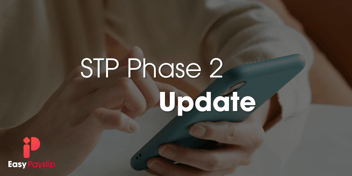What is Super Stapling?
-1.png)
The introduction of super stapling has meant considerable changes to the way that employers handle superannuation payments for new employees. Here, we’ll uncover what super stapling is, how it works, and what employers need to do to ensure they remain compliant with the new regulations.
What is super stapling?
Super stapling came into effect on 1 November 2021, as part of the “Your Future, Your Super” package announced in the October 2020 federal budget. The aim of this package was to make the superannuation system better for all super fund members.
In effect, super stapling means that employees will no longer have a new super account automatically created for them each time they start a new job. Instead, workers will be attached or “stapled” to one super fund for life, with the stapled fund following them as they change jobs.
If an employee has a preferred super fund, they do not need to use an existing stapled super fund — super stapling is only applicable when an employee hasn’t advised their employer of a particular chosen fund.
What does super stapling mean for my business and employees?
As we discussed above, there are considerable changes to the way in which employers must onboard new employees and pay their super. It’s important to note that the super stapling legislation does not affect existing employees.
As an employer, the first thing you need to do is find out if your new employee has a preferred choice of super fund. Employees only need to have their superannuation paid into an existing stapled super fund if they do not have (and advise their employer of) a preferred or chosen fund.
When onboarding a new employee, the below procedure should be followed:
- If the employee does have a preferred choice of fund, simply organise to have their contributions paid to this fund.
- If the employee does not provide you with a preferred choice of fund, you will need to request the employee’s stapled fund details via the ATO’s online tool. Once the details have been obtained, you can organise to have their contributions paid to the stapled fund.
- If the employee does not have either a preferred fund or a stapled fund, in most cases, you can simply pay their contributions to your business’ default fund. If the employee is subject to an award, agreement or determination that stipulates a prescribed fund, then in most cases, you must pay into that prescribed fund.
If onboarding more than 100 new employees at one time, you can request stapled fund details in bulk online via the ATO.
What super information do employers need?
If your new employee has provided you with details of their preferred choice of super fund, and you are able to start paying contributions into that fund, no further information should be needed.
If a request for the new employee’s stapled super fund details needs to be made through the ATO, there are certain details that need to be submitted before the request, including either a Single Touch Payroll (STP) pay event as evidence of the employment relationship between you and your employee or a Tax File Number (TFN) declaration.
Note that workers can always choose to change super funds — if they do change funds, the latest fund will become the stapled fund. Employees have an obligation to advise their employer if their super fund has changed.
What super stapling means for employees
Stapling in superannuation aims to lessen the number of superannuation accounts acquired by employees throughout their careers. Millions of multiple super accounts mean millions of dollars in unnecessary fees drained from workers' accounts each year. The super stapling legislation will not only prevent duplicated fees and insurance premiums but also lost earnings for workers.
- Super stapling cuts down on multiple accounts and lost super
Remaining with the one super fund for the duration of their working life means employees are no longer automatically — and unnecessarily — given a new account in a new fund each time a new job is commenced. With the old system, new employees were automatically placed into their new employer’s default fund if no other preference was made. Many Australians have multiple — and sometimes forgotten about — super accounts because of this, often resulting in lost and unclaimed super. - Super stapling means reduced fees for members
Having all of their super in one account means that workers are only paying fees, and insurance premiums, on one account. With consolidated super, employees are preventing their balance from eroding in unwanted costs over time, meaning there will be more money to be utilised and enjoyed in retirement. Unfortunately, people with multiple super accounts pay needless fees that can slash their balance at retirement by thousands of dollars. In addition to this, consolidated super also makes it a lot easier for people to manage and track retirement savings.
As an aside, the introduction of ATO stapling has made it even more imperative for workers to actively choose the best superannuation fund for their individual needs and circumstances. By making suitable, informed choices about their choice of fund, employees are less likely to remain in a fund that doesn’t best serve their purposes.
We’re here to support you
At Easy Business App, we’re always happy to help. As your leading Single Touch Payroll (STP) provider, Easy Payslip makes calculating and reporting superannuation easy. Our software and app has a range of simple to use features designed to make running your payroll easier.
If you’d like more information on how Easy Payslip can help support your business, or if you have any questions about our services, please get in touch today! Our Australia-based support team is here to help.
.png?width=620&name=Blog%20Banners%20Landscape%20(1).png)
.png?width=812&height=188&name=Easy-Business-app-(colour).png)
.png?width=2400&name=Blog%20Banners%20Landscape%20(1).png)



